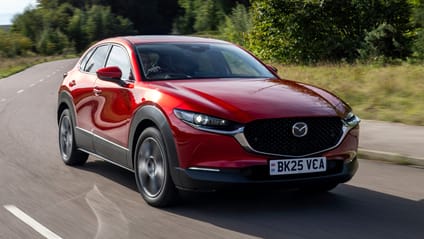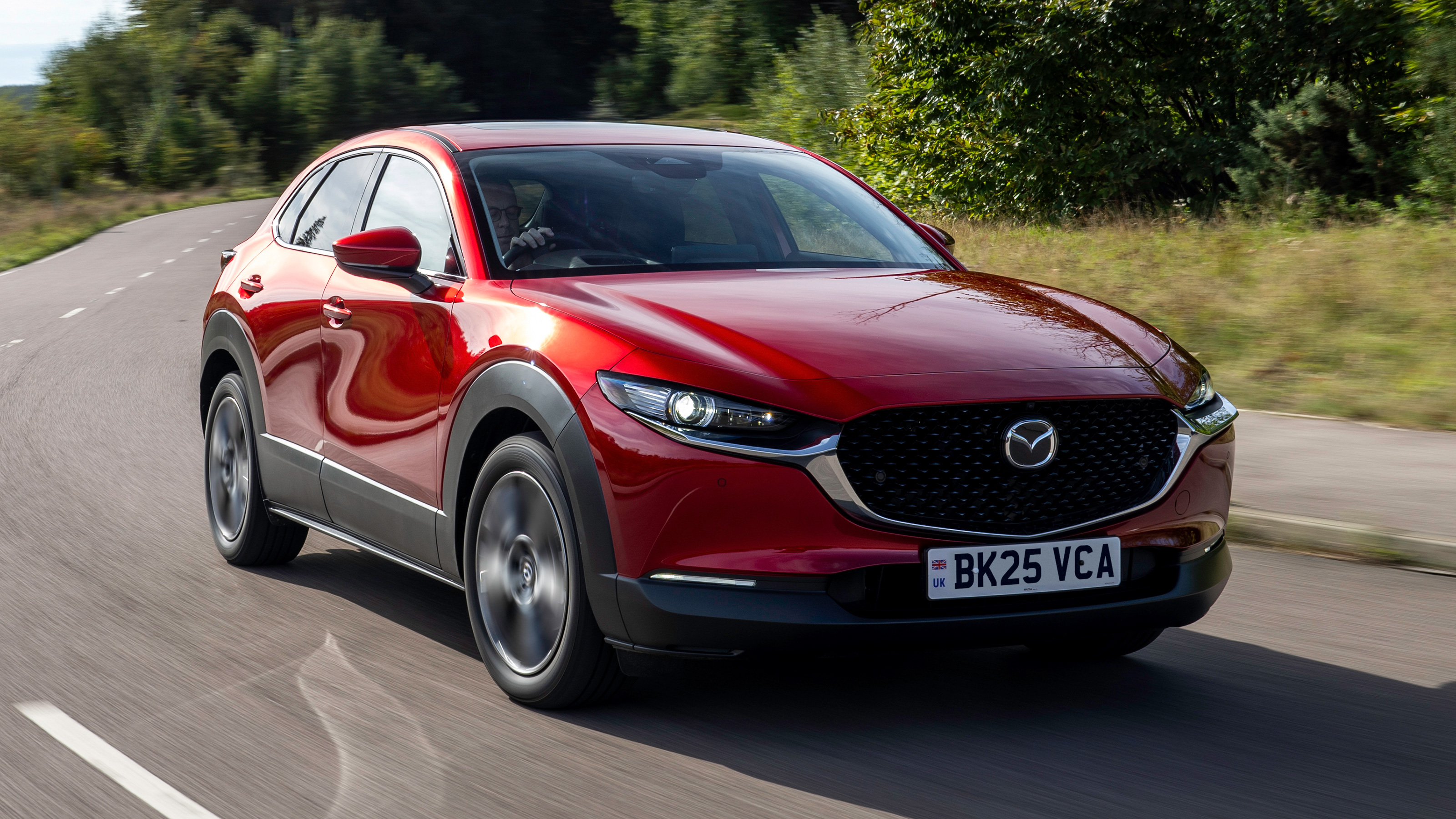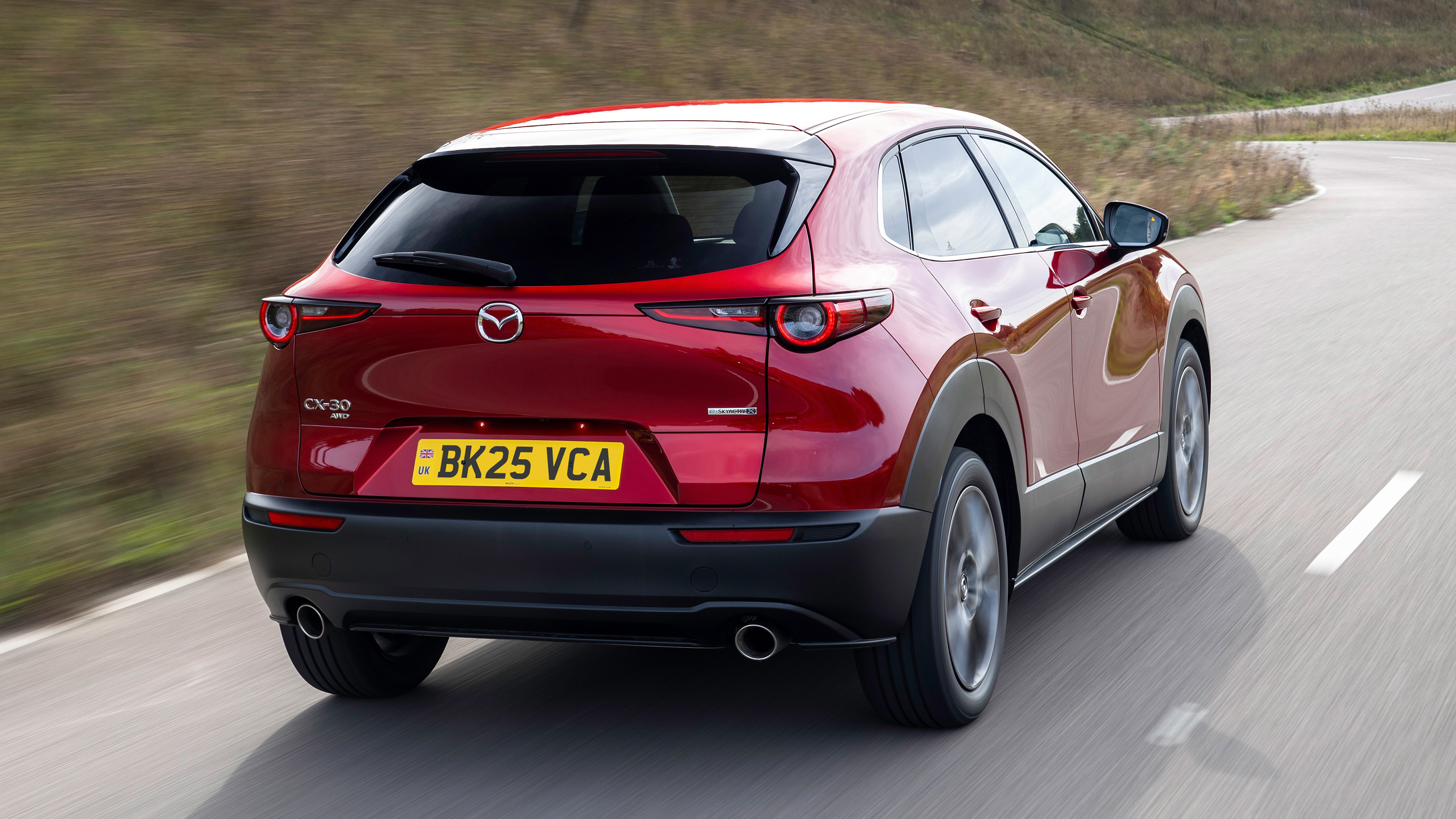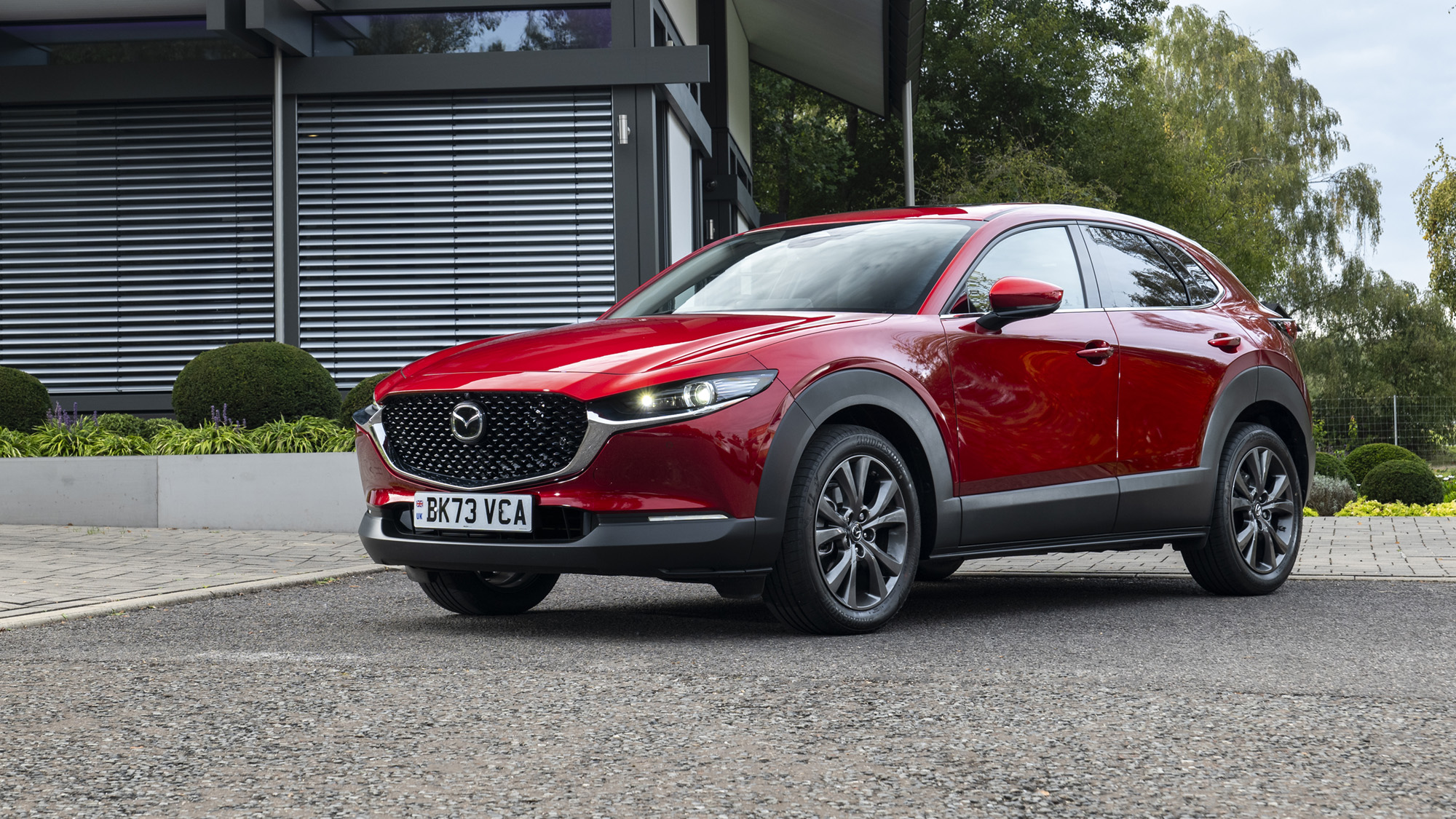
Good stuff
Good looking, handles well, lovely interior
Bad stuff
Cramped rear, old-fashioned auto, firm ride
Overview
What is it?
The CX-30 is the smallest crossover with an engine Mazda will sell you – the electric-only MX-30 is the more city friendly option, especially with its tiny battery. The CX-30, meanwhile, is basically a taller Mazda 3 hatchback, with some plastic wheelarch cladding attached to its flanks.
A hatch-based crossover? Lot of competition...
At 4.4m long and 1.5m tall, the CX-30 is around 70mm shorter and 100mm taller than the hatchback on which it’s based. Shorter because Mazda thinks this makes it easier to manoeuvre around town, which is where all of these things will live, and taller because, well, it's a crossover.
And like them or loathe them, Joe Public loves a hatch-turned-crossover: the CX-30 can count the Ford Puma, Hyundai Kona, Peugeot 2008, Renault Captur, Seat Arona, Skoda Kamiq and VW T-Roc as rivals. It's a densely packed part of the market, so you've got to work hard to stand out.
Tempted to go electric? Cast your eye on the Kia EV3, or Volvo's stylish EX30.
Is Mazda on to a winner?
The CX-30 hits the sweet spot for modern car buyers, and it’s ranked up alongside the CX-5 SUV and 3 hatchback as the firm’s top sellers. As it’s based on the 3, the CX-30 uses the same mild hybrid engines (including the extremely clever ‘spark controlled compression ignition’ petrol that uses techniques from diesel motors to increase efficiency) and gearboxes, and has a very similar interior.
On the road the hatchback origins are immediately tangible, and the CX-30 benefits from being lower than most of its rivals. It handles sharply, has a lovely crisp manual gearbox (as it should, given it's from the same stable as the MX-5 convertible), though the ride isn't quite as soft as some of its counterparts.
It's also good looking in the metal (the electric MX-30 by contrast looks like it's been worn smooth in the sea before someone found it) with just the right level of pseudo-4x4 plastic cladding and styling creases, though it can be a little anonymous. Easy to lose it in a car park, but at least it shouldn't attract any unwanted attention.
It's not as roomy as it should be inside, feeling a little cramped in the back. A sunroof really helps to lift the cabin.
What are the engines like?
You get two petrol options with the CX-30. The entry unit is the e-Skyactiv G, now a 2.5-litre instead of the 2.0-litre of old. It gets 138bhp (up 18bhp) and 176lb ft of torque (also up 18 lb ft) for a 0-62mph time of 9.7 seconds (manual) and 10.3s (auto), both nine tenths quicker than before.
Alternatively there’s the 2.0-litre variable ignition e-Skyactiv X with 183bhp, which comes with FWD (0-62mph 8.3s) or AWD. Both the auto and AWD options are a tiny bit slower.
Fuel economy varies from around 43mpg up to around 50mpg depending on which combo you go for. We’ve spent time in both variants: in the e-Skyactiv G we saw 38mpg over mixed roads versus the official 47.1mpg rating, and in the 2WD e-Skyactiv X manual we saw low 40s versus the on-paper figure of 49.6mpg.
How much will it cost me?
Well, you're looking at a base price of £25,865 for the most basic spec CX-30, with five grades to get your head around (or lost in). The range topper starts from £31,565.
Our choice from the range

What's the verdict?
The CX-30 is a decent car – it handles well, looks smart and has an interior to match. But as is always the case with crossovers, the conventional car on which it’s based – the Mazda 3 hatchback – is the more sensible buy. It drives better, is more economical, just as practical, faster, and of course is cheaper. You've got to really want the extra ride height, and in doing so you'll compromise versatility when it comes to carrying passengers. Odd.
But since when has any of that logic stopped people from flocking to crossovers? As long as you avoid the automatic and don’t often need to carry tall adults in the back, the CX-30 is just as good as anything else in this segment. Apart from the Ford Puma. Nothing holds a candle to that.
The engines are extremely interesting to car nerds too, as well as competent and efficient for those that don’t care too much. It's another strong Mazda from a company that rarely puts a foot wrong.










